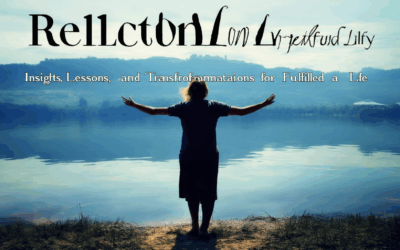The art of storytelling has long been a cornerstone of human communication, offering a powerful medium to convey ideas, emotions, and experiences. In today’s digital age, the meaningful storytelling journey has evolved, becoming a critical tool for businesses, educators, and creators alike. Whether it’s through tales that resonate on an emotional level or narratives that drive organizational success, the ability to craft compelling stories is more essential than ever.

The 5 Cs of Storytelling
Telling a great story involves understanding and mastering five key elements, commonly referred to as the 5 Cs of storytelling. These elements work together to create engaging, memorable, and impactful narratives.
- Character: The heart of any story is its protagonist. A well-developed character drives the plot, undergoes growth, and connects with the audience on an emotional level. Without a strong character, the story lacks depth and direction.
- Conflict: Every compelling story requires conflict. This can be an external struggle, such as a battle or quest, or an internal struggle, like personal doubt or transformation. Conflict creates tension and keeps the reader invested in the outcome.
- Context: Setting provides the foundation for your story. Whether it’s a historical timeframe, a specific location, or a particular social environment, the context shapes the characters’ actions and the story’s tone.
- Complication: To keep audiences engaged, stories often introduce complications. These can be unexpected twists, challenges, or obstacles that force characters to adapt and evolve. Complications add layers to the narrative and prevent predictability.
- Consequence: Every action in a story has an effect. Consequences determine the story’s trajectory and reveal the characters’ true nature. They provide closure and leave a lasting impression on the reader.
By focusing on these five elements, storytellers can craft stories that resonate emotionally and captivate audiences. Understanding the 5 Cs helps in creating narratives that are not only entertaining but also thought-provoking and meaningful.
What are the 5 Ps of storytelling?
The 5 Ps of storytelling are a framework used to ensure all essential elements of good storytelling are effectively communicated. These elements work together to create engaging, memorable, and impactful stories.
- P – People: The individuals who drive the story forward, whether they are protagonists, antagonists, or supporting characters. People give stories emotional depth and relatability.
- P – Places: The settings where the story unfolds. Places shape the tone, mood, and atmosphere of the narrative, helping to establish a unique world for the story to take place.
- P – Puzzles: The conflicts, challenges, or mysteries that the story resolves. Puzzles keep the audience engaged and curious about what will happen next.
- P – Patterns: The underlying themes, motifs, or recurring elements that tie the story together. Patterns help audiences understand the story’s purpose and meaning.
- P – Purpose: The central goal or message of the story. Purpose gives the narrative direction and ensures that the story communicates its intended impact to the audience.
These elements can be exemplified through a LEGO campaign, where the “People” might include a young builder named Finn, the “Places” could be various LEGO worlds, the “Puzzles” might involve solving building challenges, the “Patterns” could explore the theme of creativity, and the “Purpose” might be to inspire imagination in children worldwide.

What is Meaningful Storytelling?
Meaningful storytelling is the art of conveying ideas, emotions, and lessons through narrative in a way that resonates deeply with the audience. It goes beyond mere entertainment, aiming to inspire, educate, or provoke thought. A truly meaningful story is one that leaves the audience with a sense of understanding, connection, or growth.### Key Elements of Meaningful Storytelling1. **Emotional Connection**: Stories that evoke strong feelings are more likely to be considered meaningful. Whether it’s joy, sadness, anger, or nostalgia, emotions help the audience relate to the content on a personal level. 2. **Moral or Lesson**: Many meaningful stories incorporate a moral lesson or underlying theme. These tales often function as allegories, teaching the audience about values, behavior, or life lessons through the narrative.3. **Relatability**: Stories that reflect real-life experiences or universal truths tend to be more impactful. When the audience can see themselves or their world within the story, it enhances its meaningfulness.4. **Cultural or Historical Context**: Stories rooted in cultural or historical contexts often carry added significance. They provide insight into different perspectives, traditions, or events that shape societies.5. **Character Development**: Well-developed characters who undergo growth or transformation can make a story more meaningful. Audiences often identify with these characters and their journeys.6. **Imaginative Vision**: Stories that present unique visions or explore unconventional ideas can be particularly meaningful. They challenge the audience’s perceptions and invite them to consider new ways of looking at the world.### Examples of Meaningful Storytelling- **Fables and Parables**: These traditional stories often convey moral lessons wrapped in relatable characters and situations.- **Personal Anecdotes**: Sharing a personal story can be incredibly powerful, as it allows for authenticity and vulnerability.- **Historical Narratives**: Stories that recount significant historical events or figures can provide perspective and context to modern issues.### The Role of StorytellersStorytellers have the power to shape how we understand the world. By crafting meaningful stories, they can influence emotions, opinions, and actions. Whether through written words, visual media, or spoken narratives, the impact of storytelling endures long after the story itself is forgotten.
Peter Spirito explores the art of storytelling through personal reflections and essays, offering insights into the power of narrative to connect and inspire.

The Four Cs of Storytelling
The four Cs of storytelling are:
- Consistency : Ensures the story maintains a steady theme, tone, and style throughout.
- Conflict : Drives the narrative forward by creating tension and challenges for characters.
- Complication : Introduces complexity or unexpected twists to keep the story engaging.
- Consequence : Demonstrates the outcomes of the story’s events, providing closure and meaning.
The Five Stages of Storytelling
A compelling narrative is built upon a structured approach, consisting of distinct phases that guide the audience through the story’s progression. Below are the five essential stages of storytelling:1. **Exposition**: This is the foundation of the story, introducing the setting, characters, and the central conflict or theme. Through descriptive details and background information, the audience becomes acquainted with the world of the story. Effective exposition sets the stage for the subsequent developments, providing necessary context and hooking the reader’s interest.2. **Rising Action**: After the exposition, the story begins to develop tension and momentum. This phase involves the accumulation of events leading towards the climax. Character development, subplots, and foreshadowing occur here, creating anticipation and driving the narrative forward. The rising action keeps the audience engaged by escalating the stakes and building suspense.3. **Climax**: The climax is the peak of the story, where the main conflict reaches its most intense point. This is often the turning point where the protagonist faces their greatest challenge or makes a significant decision. The climax can be dramatic, emotional, or even symbolic, leaving a lasting impact on the reader.4. **Falling Action**: Following the climax, the story gradually resolves itself. This phase wraps up loose ends and shows the consequences of the events that transpired. The falling action can reveal character growth, resolve conflicts, or provide closure to the narrative. It ties together the elements introduced earlier, giving the story a satisfying conclusion.5. **Resolution**: The resolution concludes the story, offering clarity and finality. It may confirm the outcome of the protagonist’s journey or leave the audience with food for thought. A strong resolution reinforces the themes and emotions of the story, leaving a lasting impression on the reader.By mastering these stages, storytellers can craft engaging and impactful narratives that captivate audiences and effectively communicate their intended message.
The Four Ps of Storytelling
Storytelling is a powerful tool that can captivate audiences and convey messages effectively. While there are various frameworks used to analyze storytelling techniques, one widely recognized framework is the **4 Ps of Storytelling**. These elements work together to create engaging and memorable stories. Below, I’ll break down each component and explain its significance.
People
The “People” aspect of storytelling refers to the characters and individuals involved in the narrative. These characters serve as relatable figures who help the audience connect with the story on a deeper level. Whether it’s a protagonist overcoming challenges or a community coming together, the characters often become the heart of the story. I’ve written extensively about the impact of personal storytellingin connecting readers to shared experiences.
Place
“Place” in storytelling refers to the setting or environment where the story unfolds. This could be a physical location, such as a village, forest, or city, or even a mental space. The setting plays a crucial role in shaping the tone and atmosphere of the story. For example, a story set in a bustling city might feel urgent and fast-paced, while one in a quiet village could evoke a sense of tranquility. I explore the importance of story settingsin greater detail on my blog.
Purpose
The “Purpose” of storytelling is the underlying message or theme that the author aims to convey. This could be inspirational, educational, or simply entertaining. A well-crafted purpose ensures that the story resonates with the audience on a meaningful level. I discuss how storytelling purposescan vary widely, from imparting wisdom to sharing personal reflections.
Plot
The “Plot” is the sequence of events that make up the story. It’s the backbone of the narrative, guiding the audience through the story’s progression. A compelling plot keeps readers engaged and maintains their interest throughout the tale. I’ve written about the importance of creating a strong narrative arcin my blog.
Conclusion
By combining People, Place, Purpose, and Plot, storytellers can craft stories that are not only entertaining but also deeply impactful. These elements work together to create a cohesive and immersive experience that leaves a lasting impression on the audience. Through my writing, I continue to explore how these principles can be applied to create meaningful and memorable stories.




0 Comments